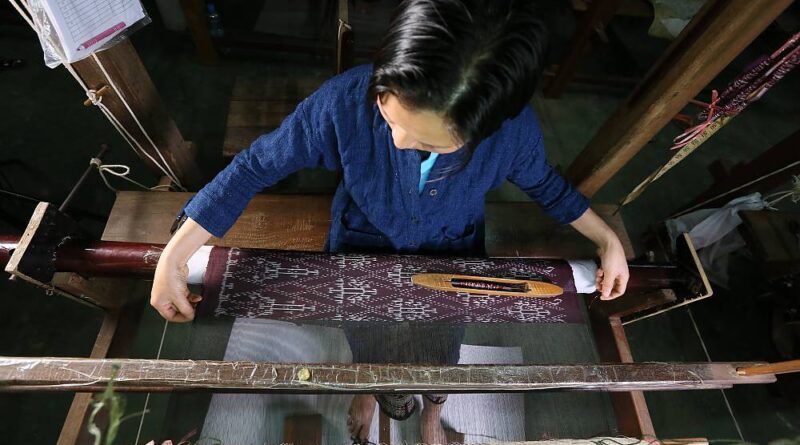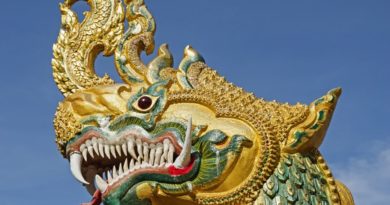Lao Weaving Joins UNESCO’s Intangible Heritage List
Source: Vientiane Times
The United Nations Educational, Scientific and Cultural Organisation (UNESCO) has designated the Naga motif, which is commonly used by Lao women when weaving ornamental fabrics and traditional skirts, as a form of Intangible Cultural Heritage of Humanity.
UNESCO’s recognition of this art form reflects the cultural value of the Lao textiles woven by the women of many of Laos’ ethnic groups, whose weaving designs have been passed down from generation to generation in all parts of the country.
Patterns resembling the snake-like mythical beings, Naga, which are enshrined in Lao folklore, are incorporated into the fabric used to make traditional skirts and are symbolic of both protection and strength.
“The Naga is a mythical, serpent-like creature that lives in rivers. Lao people believe that Naga are ancestors that watch over them,” the UNESCO website states.
“To show their respect, Lao people add Naga motifs to many different objects, the most common of which is textiles through weaving. Naga weaving entails weaving the motif by hand with a traditional wooden loom. It can take several days to complete a single motif.”
Lao textiles act as visual storytelling, deftly incorporating symbols and motifs to tell the stories of the people. In addition to communicating rich cultural tales, these designs – which range from legendary animals to motifs drawn from nature – also disclose details about a person’s origins, marital status, and ethnic identity.
The techniques are based on traditional knowledge and skills dating back centuries and are passed down from mother to daughter. There are many different styles of Naga patterns, and they can be woven in silk, organza, and cotton.
Traditionally, the body of the Naga is woven in white or in one solid colour, with the crest predominating in strong colours to symbolize the creature’s supernatural powers. Dyers therefore prepares symbolic colours using local and natural materials, according to UNESCO.
For instance, red dyes are created from stick lac, green from indigo plants, yellow from wood, and gold from almond leaves. The Naga motif is used all over the country, on blankets for newborns, on woven fabric used for everyday clothing such as women’s skirts, and on sashes worn during formal occasions and rituals.
Handmade Lao textiles are promoted by the government, individuals, businesses, non-profit organizations, and international organizations.
Low-interest loans have been provided to weavers to support production, generating job opportunities for rural women and helping to preserve Lao culture.
In 2017, UNESCO declared the music of the khaen, a traditional Lao pipe instrument, as a form of Intangible Cultural Heritage of Humanity. The declaration was made at a meeting of the Intergovernmental Committee for the Safeguarding of Intangible Cultural Heritage held in the Republic of Korea.





